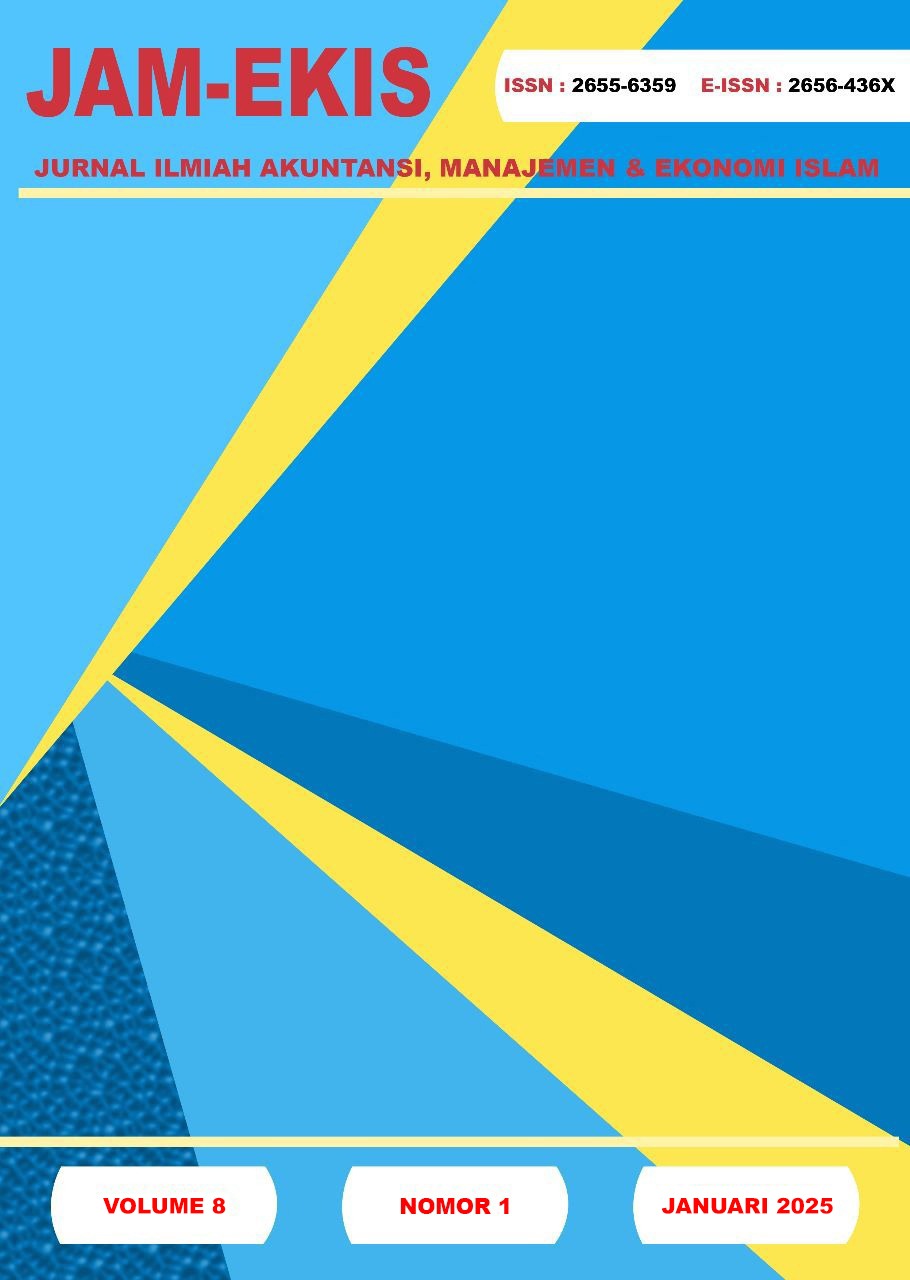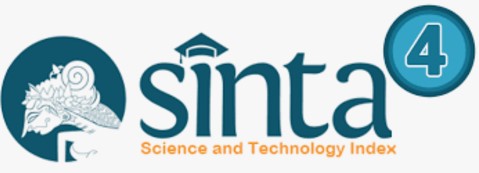Studi Kemiskinan di Provinsi Bengkulu (Review Indeks Pembangunan Inklusif)
DOI:
https://doi.org/10.36085/jamekis.v8i1.7672Abstrak
The percentage of poor people in Bengkulu Province during 2011 – 2023 is still above the national level. The problem of poverty in Bengkulu Province remains the focus of development, especially in efforts to alleviate poverty. This study aims to analyze the influence of 3 pillars of inclusive economic growth, per capita income, length of schooling, and unemployment on poverty in Bengkulu Province. The results of the research conducted showed that simultaneously, per capita income, education, and unemployment, the three pillars of the inclusive development index, had an effect on poverty in Bengkulu Province. Partially, the variables that are able to reduce poverty in Bengkulu Province are Per Capita Income, education, and the inclusive development index pillar 1. The Pillar 3 inclusive development index has a positive influence on poverty in Bengkulu Province
Referensi
Agénor, P. (2004). Unemployment-Poverty Trade-offs. Social Science Research.
Akbar, T. F. M., Wahyuni, S., Wardani, E., & Munawara, M. (2022). Memperkokoh Kesiapan Indonesia Dalam Menghadapi Era Disrupsi Sektor Energi. Jurnal Ilmiah Akuntansi, Manajemen dan Ekonomi Islam (JAM-EKIS), 5(1), 26-35.
Amponsah, M., Agbola, F. W., & Mahmood, A. (2023). The relationship between poverty, income inequality and inclusive growth in Sub-Saharan Africa. Economic Modelling, 126(June), 106415. https://doi.org/10.1016/j.econmod.2023.106415
Anand, R., Mishra, S., & Peiris, S. J. (2013). Inclusive Growth: Measurement and Determinants. IMF Working Papers, 13(135), 1. https://doi.org/10.5089/9781484323212.001
Anand, R., Tulin, V., & Kumar, N. (2014). India: Defining and Explaining Inclusive Growth and Poverty Reduction. IMF Working Papers, 14(63), 1. https://doi.org/10.5089/9781484354230.001
Anu, T., Emmanuel, G., & Felix, A. (2022). Social Dimension of Inclusive Growth in ECOWAS: Implication for Poverty Reduction. Central Bank of Nigeria Journal of Applied Statistics, 13(1). https://doi.org/10.33429/cjas.13122.9/9
Anwar, M. M., Khan, G. Y., & Khan, S. J. I. (2019). Investigating of the Inclusiveness in the Economic Growth of Pakistan. EMC Review - Časopis Za Ekonomiju - APEIRON, 17(1). https://doi.org/10.7251/emc1901008m
Anyanwu, J. C. (2013). Determining the Correlates of Poverty for Inclusive Growth in Africa (No. 181-September 2013; Issue 181).
Asghar, S., & Javed, S. A. (2011). On Measuring Inclusiveness of Growth in Pakistan. The Pakistan Development Review, 50:4(Part II), 879–894. https://doi.org/https://doi.org/10.30541/v50i4iipp.879-894
Askarova, M., Saddulaev, T., & Radjabov, B. (2021). Possibilities and challenges of inclusive economic growth in countries. E3S Web of Conferences, 244, 1–9. https://doi.org/10.1051/e3sconf/202124410039
Atangana, E. (2022). With the Continuing Increase in Sub-Saharan African Countries, Will Sustainable Development of Goal 1 Ever Be Achieved by 2030? Sustainability (Switzerland), 14(16). https://doi.org/10.3390/su141610304
Azizah, N., & Aisyah, S. (2023). Penerapan Kaidah Rantai dalam Diferensial: Pengaruh Produk Domestik Regional Bruto terhadap Kemiskinan 34 Provinsi di Indonesia Tahun 2017-2021. Jurnal Bisnis Dan Manajemen, 3(2), 220–229.
Balasubramanian, P., Burchi, F., & Malerba, D. (2023). Does economic growth reduce multidimensional poverty? Evidence from low- and middle-income countries. World Development, 161, 106119. https://doi.org/10.1016/j.worlddev.2022.106119
Bernini, C., Emili, S., & Ferrante, M. R. (2023). Poverty-happiness nexus: Does the use of regional poverty lines matter? Papers in Regional Science, 102(2), 253–272. https://doi.org/10.1111/pirs.12722
Dluhopolskyi, O., & Zhukovska, A. (2023). Inclusive Development as an Instrument to Overcome Economic Inequality and Discrimination. ECONOMICS - Innovative and Economics Research Journal, 11(1), 11–27. https://doi.org/10.2478/eoik-2023-0016
Dorffel, C., & Schuhmann, S. (2022). What is Inclusive Development? Introducing the Multidimensional Inclusiveness Index. Social Indicators Research, 162(3), 1117–1148. https://doi.org/10.1007/s11205-021-02860-y
Fadilah, N., Dwi, A. S., & Sukiman. (2016). Analisi pengaruh pendapatan per kapita, tingkat penaguran, IPM dan pertumbuhan penduduk terhadap kemiskinan di Jawa Tengah tahun 2009-2013. Jurnal Pembangunan Ekonomi Wilayah, 11(01), 18–26.
Fryer, D., & Fagan, R. (2003). Poverty and unemployment. In Poverty and Psychology (Issue March 2002, pp. 87–88). Spinger Science+Business Media New York. https://doi.org/10.5040/9781350275935.ch-2
Gupta, J., Bavinck, M., Ros-Tonen, M., Asubonteng, K., Bosch, H., van Ewijk, E., Hordijk, M., Van Leynseele, Y., Lopes Cardozo, M., Miedema, E., Pouw, N., Rammelt, C., Scholtens, J., Vegelin, C., & Verrest, H. (2021). COVID-19, poverty and inclusive development. World Development, 145, 105527. https://doi.org/10.1016/j.worlddev.2021.105527
Heshmati, A., Kim, J., & Wood, J. (2019). A survey of inclusive growth policy. Economies, 7(3), 1–18. https://doi.org/10.3390/economies7030065
Inam, U. S. (2015). Poverty alleviation strategies In Nigeria: A call for an inclusive growth approach. Journal of Poverty, Investment and Development, 15, 110–119.
Januardi, R. W., & Utomo, A. P. (2017). Application of spatial error model using GMM estimation in impact of education on poverty alleviation in Java, Indonesia. Communications in Science and Technology, 2(2), 53–63. https://doi.org/10.21924/cst.2.2.2017.50
Jewaru, D. H. S., & Siagian, E. J. (2022). Determinan Ketimpangan Dan Kemiskinan Dalam Kerangka Pembangunan Ekonomi Inklusif (Studi Pada Kabupaten/Kota Di Nusa Tenggara Timur). Jurnal Statistika Terapan, 2(1), 71–86.
Johnson, S., & Muthoora, P. (2021). The Political Economy of Inclusive Growth: A Review. IMF Working Papers, 2021(082), 1. https://doi.org/10.5089/9781513574189.001
Junaidi, J., Zulgani, Z., Wahyudi, I., & Zevaya, F. (2024). Towards inclusive green growth: a holistic analysis of sustainable development goals in the agritourism sector of Jambi Province. Jurnal Perspektif Pembiayaan Dan Pembangunan Daerah, 12(2), 221–234. https://doi.org/10.22437/ppd.v12i2.29273
Lee, N., & Sissons, P. (2016). Inclusive growth? The relationship between economic growth and poverty in British cities. Environment and Planning A, 48(11), 2317–2339. https://doi.org/10.1177/0308518X16656000
Liu, Y. (2018). Analysis of the Impact of Education Poverty Alleviation on Economic Growth in Shaanxi Province. Busem, 94–98. https://doi.org/10.25236/busem.2017.20
Machira, K., Mgomezulu, W. R., & Malata, M. (2023). Understanding poverty dimensions and transitions in Malawi: A panel data approach. Research in Globalization, 7(August), 100160. https://doi.org/10.1016/j.resglo.2023.100160
Munoz, O. G. (2015). Poverty: An Outline of policies of Poverty in Mexico and Latinamerica (2000-2006). Journal of Social Sciences, 4(1), 649–663.
N., J., K. (2008). Inclusive Growth in India: Agriculture, Poverty and Human Development. Social Change, June, 2007–2009. https://doi.org/doi: 10.1177/004908570803800213
Najmi, I., Hasrina, C. D., Asmawati, A., & Ansari, R. (2024). Belanja Pemerintah, FDI, Pertumbuhan Ekonomi, Pertumbuhan Industri, dan Kemiskinan di Indonesia. Jurnal Ekonomi Dan Pembangunan Indonesia, 12(1), 167–183. https://doi.org/10.21002/jepi.2024.11
Neme Castillo, O., & Chiatchoua, C. (2022). US multinational enterprises: Effects on poverty in developing countries. Research in Globalization, 5(September), 100090. https://doi.org/10.1016/j.resglo.2022.100090
Novignon, J., Nonvignon, J., & Mussa, R. (2018). The poverty and inequality nexus in Ghana a decomposition analysis of household expenditure components. International Journal of Social Economics, 45(2), 246–258. https://doi.org/10.1108/IJSE-11-2016-0333
Sari, N. I. (2018). Determinan Tingkat Kemiskinan di Daerah Istimewa Yogyakarta Tahun 2007 – 2014. Economics Development Analysis Journal, 7(2), 128–136. https://doi.org/10.15294/edaj.v8i2.23411
Sitorus, M. A., & Hutasoit, E. F. (2021). Upaya Menekan Permasalahan Kependudukan Di Masyarakat Melalui Peningkatan Akses Pendidikan Nonformal. Research and Development Journal of Education, 7(2), 474. https://doi.org/10.30998/rdje.v7i2.10565
Siyan, P., Adegoriola, A. E., & Adolphus, J. A. (2016). Unemployment and Inflation: Implication on Poverty Level in Nigeria. Journal of Development and Society, 3(4), 17–45.
Soleh, A., Sukiyono, K., & Nurazi, R. (2022). Inclusive Growth: A Poverty Approach. Technium Business and Management, 2(2), 1–15. https://doi.org/10.47577/business.v2i2.6379
Spaho, A. (2014). Determinants of Poverty in Albania. Journal of Educational and Social Research, April 2014. https://doi.org/10.5901/jesr.2014.v4n2p157
Tikova, M. K. (2021). The Social Progress Of The Districts Of Bulgaria. Regional Formation and Development Studies, 2(34), 81–91. https://doi.org/https://doi.org/10.15181/rfds.v34i2.2246
Titania, N. A., & Setyowati, E. (2022). Determinan Tingkat Kemiskinan di Karesidenan Madiun Dengan Data Panel. Ekonomikawan: Jurnal Ilmu Ekonomi Dan Studi Pembangunan, 22(1), 89–99. https://doi.org/10.30596/ekonomikawan.v22i1.9987
Todaro, Michael P. (2015). Economic Development Twelfth Edition (D. Battista (ed.); Twelfth). Pearson Education, Inc., publishing as Prentice Hall.
Tran, T. K. (2023). Does Microfinancing, Financial Inclusion, and Educational Loans Alleviate Poverty and Inequality: Evidence From Vietnam. Technological and Economic Development of Economy, 29(6), 1687–1707. https://doi.org/10.3846/tede.2023.20348
Vos, R., & Cattaneo, A. (2021). Poverty reduction through the development of inclusive food value chains. Journal of Integrative Agriculture, 20(4), 964–978. https://doi.org/10.1016/S2095-3119(20)63398-6
Wilson, W. J. (2018). Jobless Poverty: A New Form of Social Dislocation in the Inner-City Ghetto.". In David Grusky and Szonja Szelenyi (Ed.), The Inequality Reader (2nd Editio, pp. 87–102). Routledge.
Wooldridge, J. . (2013). Introductory Econometrics: A Modern Approach (5th ed.). South-Western Cengage Learning.







